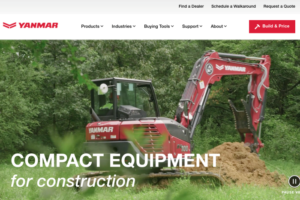Websites and associated technology have changed the relationships between businesses and customers. Having an attractive, purposeful and convenient website can make or break a company. A website is particularly useful for a decorative concrete artisan, because it allows you to visually showcase your work, publish testimonials and be easily found by potential customers.
When confronted by an ugly or hard-to-use website, most people will simply move on to the next site. This potential loss of income and business can be avoided. Here, we’ll discuss what decorative concrete customers want to see — and how they want to see it — to help ensure your website is working for you and not the other way around.
How can customers reach you?
Is your company phone number easily located on your website? Is it large enough to read? You may know exactly where to find your phone number, but first-time visitors to your website may have difficulty. If it can’t be located quickly, rethink the location of the phone number. For every second your audience has to spend looking for your contact information, that’s a handful of people who will move on to the next business.
Today’s technology has a big effect on our phone usage. A phone is not simply for talking anymore. Customers want the ease of email or an easy-to-use contact form. Include these options near your phone number, perhaps all together in a “Contact Us” dropdown box.
Do customers know what you offer?
“We pour concrete” is much different than the services decorative concrete companies actually offer, so don’t skimp on descriptions of what you do. Be specific. Tell them you stamp, stain, color, polish and texture concrete, as well as design outdoor living spaces. Include several pictures with each service because pictures help customers imagine their own home’s potential. The phrase “outdoor living spaces” is much less effective than a picture of a beautiful concrete fire pit and patio area with padded concrete seating and an encompassed grill. Show your customers your services. Don’t just tell them.
How do customers know you do great work?
There are two main components every contracting service website needs: testimonials and a project portfolio. The best way to earn potential customers’ trust is to connect them with former customers and show them actual work you’ve done.
Be sure when you include testimonials to use only real feedback. Customers can sniff out fake testimonials and it is a sure-fire way to lose business. Testimonials should be current, accurate and descriptive of the service you provided. Ask customers to provide lengthy details about the job and how they felt throughout the experience. Ask specific questions to get the answers you are seeking.
A well-rounded portfolio of your work gives you a unique opportunity to show potential customers what you can do. Not only will this earn you significant trust with regard to your craftsmanship, but customers will see the broad capabilities you have with concrete. Include as many jobs as possible. This is also a great area to utilize search engine optimization. Along with the pictures of each job, describe the techniques you used, the locations of the jobs and any other information that may be useful to drive traffic to your site.
Are you an authority in your field?
Customers want to feel they can trust you. If you don’t already have a blog, consider launching one on your website and positioning yourself as an expert on the topic of concrete. You don’t want to drown every webpage visitor with the science of concrete, which is why a blog is a great tool. You can organize posts by topic, which allows you to have a section for scientific details such as how concrete cures and another for uncommon uses for decorative concrete.
A blog is a great platform for you to answer questions as well. It’s always a good idea to have an FAQ section on any website. Ask and answer any question you can think of with regard to your particular service, and then answer it in further detail on your blog. For example, “Is decorative concrete slippery?” can be answered with a line about whether or not it is slippery in different applications. Then, you can link your answer to your blog for those who are interested in topical treatments that can make decorative concrete less slippery.
Is your website easy to use?
A slow-loading page, pixelated pictures or glitches in navigation are the fastest ways to lose a modern audience. It is important to spend time upfront to ensure what is called “mobile responsiveness,” or a page that loads equally well whether the customer is using a phone, laptop or tablet.
In a world where our attention spans are shrinking and our access to information is growing, having a comprehensive and easy-to-use website is more important than ever. Clear contact information and efficient mobile responsiveness will entice potential customers to stay on your site.
Honest and accurate customer testimonials paired with pictures and descriptions of available services and past jobs will lend customers a sense of security. Artfully chosen pictures do more to encourage customers’ creativity than anything else, and including terms chosen for search engine optimization (like those specific services: stained concrete, stamped concrete patios, concrete fire pits, etc.) will drive traffic to your site and expand your audience.
By providing information from all corners of the decorative concrete field and educating readers about decorative concrete processes, you will establish yourself as a trusted authority in the concrete profession. Taking these steps to improve or launch your website could be the difference between a booming business and one that’s just struggling to get by.















